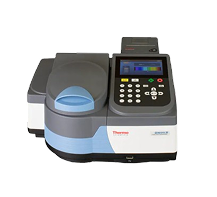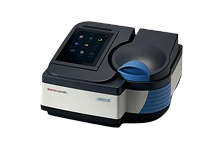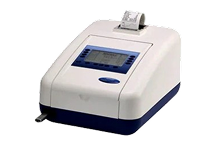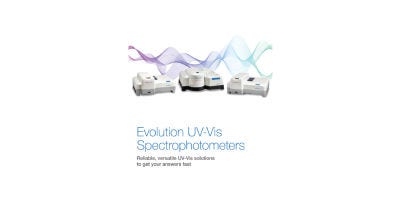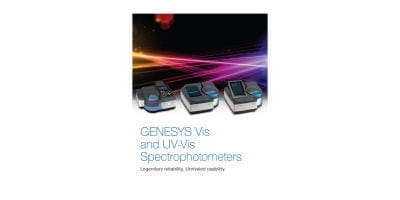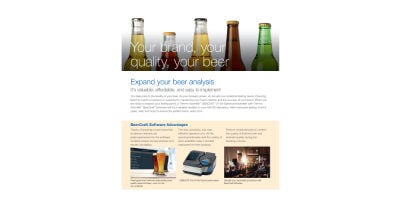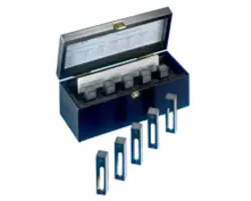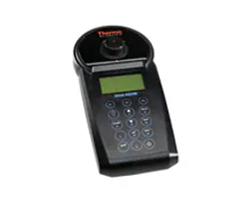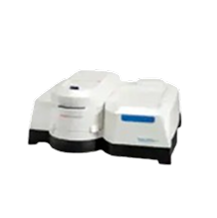
UV-Vis Spectrophotometers
Useful Links
Save Now - Exclusive Deals
Product Code 11400539
Product Code 9510003
Product Code 15179702
Product Code 7160112
Product Code 7145773
Product Code 11485089
Product Code 11490529
Product Code 15335741
Product Code 13101744
Product Code 15787567
Product Code 13236389
Must Have
Product Code 4532034
Product Code 8430009
Product Code 12201012
Product Code 9510005
Complete Your Order - Great Deals
Product Code 15373519
Product Code 10412121
Product Code 10104323
FAQ
A UV-Vis spectrophotometer is an analytical instrument used to measure the absorbance or transmission of ultraviolet (UV) and visible (Vis) light by a sample. It operates within the wavelength range of approximately 200 to 800 nanometers, covering both UV and visible light spectra.
Here is how it works:
The instrument uses a light source that emits both UV and visible light. The light is directed through a monochromator, which isolates specific wavelengths of light. The selected wavelength of light passes through the sample. The light that passes through the sample is then detected and measured. The instrument calculates the absorbance or transmission of the light by the sample and displays the results.
UV-Vis spectrophotometry is commonly used in various fields, including chemistry, biology, and environmental science, for applications such as:
- Determining the concentration of a substance in solution
- Characterizing the optical properties of materials
- Analyzing the kinetics of chemical reactions
- Studying the absorption spectra of compounds
The fundamental principle behind UV-Vis spectrophotometry is Beer-Lambert Law, which relates the absorbance of light to the concentration of the absorbing species in the sample:
- A=ϵ⋅c⋅l
- where:
- A is the absorbance
- ϵ is the molar absorptivity
- C is the concentration of the sample
- l is the path length of the sample cell
UV-Vis spectroscopy can provide a wealth of information about a sample, including:
- Concentration of a Substance: by applying Beer-Lambert Law, UV-Vis spectroscopy can determine the concentration of an absorbing species in a solution. This is particularly useful in quantitative analysis
- Absorption Spectrum: It can provide the absorption spectrum of a substance, which is a plot of absorbance versus wavelength. This can be used to identify and characterize substances based on their unique spectral fingerprints
- Chemical Composition: By analyzing the absorption peaks, you can infer information about the chemical composition and structure of a compound. Different functional groups absorb light at characteristic wavelengths
- Purity of a Sample: The presence of impurities can often be detected by unexpected absorption peaks or deviations in the expected absorption spectrum
- Reaction Kinetics: UV-Vis spectroscopy can be used to study the kinetics of chemical reactions by monitoring changes in absorbance over time. This helps in understanding reaction rates and mechanisms
- Molecular Interactions: It can be used to study interactions between molecules, such as binding of a ligand to a protein. Changes in the absorption spectrum can indicate conformational changes or complex formation
- Color Analysis: The color of a substance, which is related to its absorption in the visible range, can be quantitatively analyzed using UV-Vis spectroscopy. This is useful in industries like food, textiles, and paints
- Photostability and Degradation: UV-Vis can be used to study the stability of compounds under light exposure by monitoring changes in their absorption spectra over time
When selecting a UV-Vis spectrophotometer, consider the following five key factors to ensure it meets your specific needs:
- Wavelength Range and Resolution: Ensure the instrument covers the necessary range for your applications. Standard UV-Vis spectrophotometers typically cover 200-800 nm, but some applications may require extended ranges. Higher resolution (smaller bandwidth) allows for better differentiation between closely spaced spectral features. Ensure the resolution meets the requirements of your analyses
- Accuracy and Precision: Photometric Accuracy refers to the accuracy with which the instrument can measure absorbance or transmittance. High photometric accuracy is crucial for reliable quantitative analysis. Reproducibility refers to the ability of the instrument to provide consistent results over multiple measurements. High precision is important for reproducibility and reliability
- Sensitivity and Detection Limits: The ability of the spectrophotometer to detect small changes in absorbance is especially important for low-concentration samples. Consider the minimum concentration of analyte that can be accurately detected by the instrument
- Sample Handling and Throughput: Ensure the spectrophotometer is compatible with the types and sizes of cuvettes you plan to use. If you need to analyze a large number of samples, look for features such as autosamplers or multi-cell holders that can automate and speed up the process
- Software and Data Analysis: The software should be user-friendly and intuitive, allowing for easy operation and data analysis. Ensure the software provides the necessary tools for data processing, such as peak identification, baseline correction, and quantitative analysis. Check if the software allows for easy export of data in formats compatible with other analysis tools you use
Additional considerations could include the instrument's size and footprint, ease of maintenance, and manufacturer support and warranty options. Selecting the right UV-Vis spectrophotometer involves balancing these factors based on your specific analytical needs and budget.
